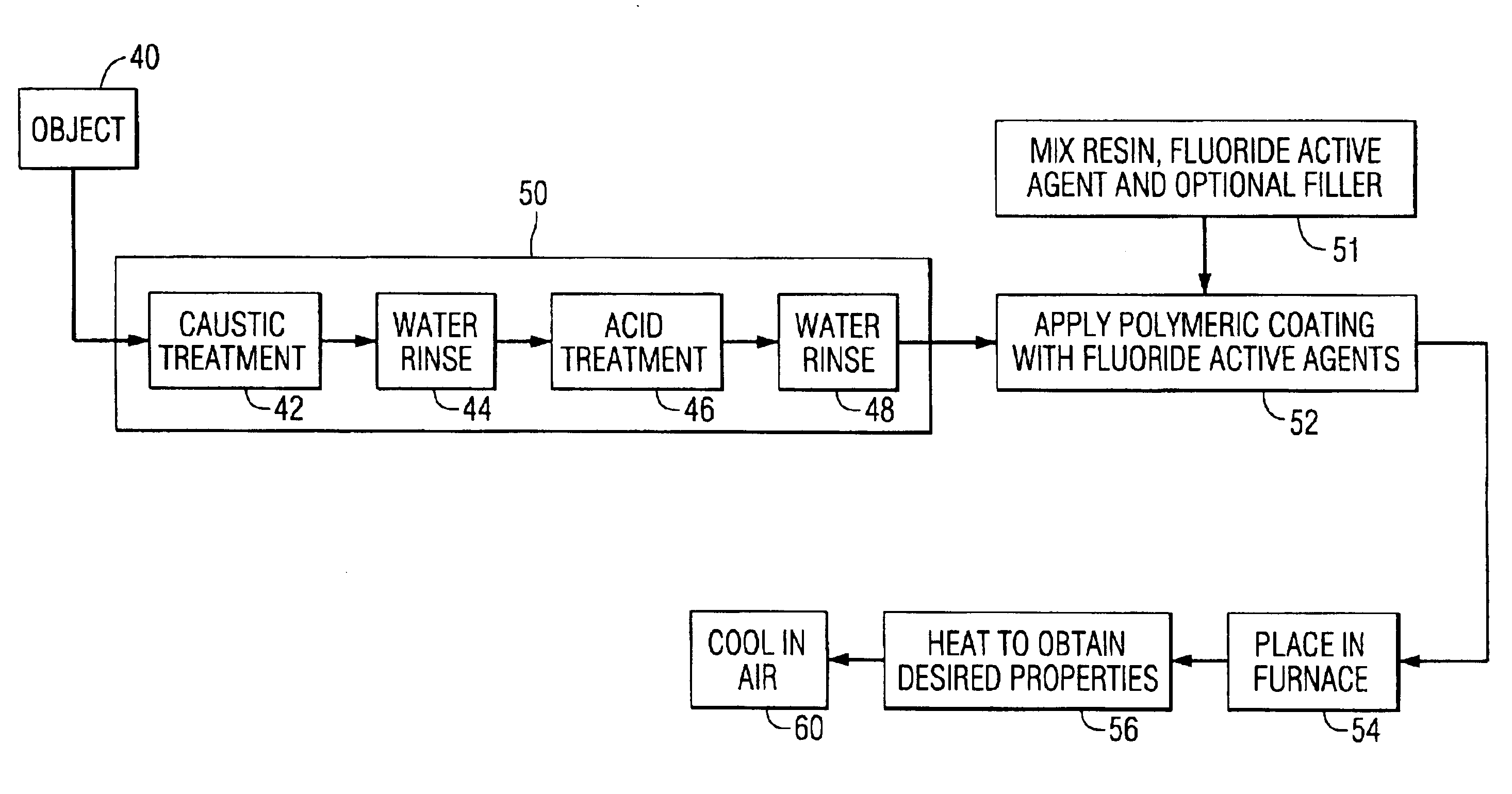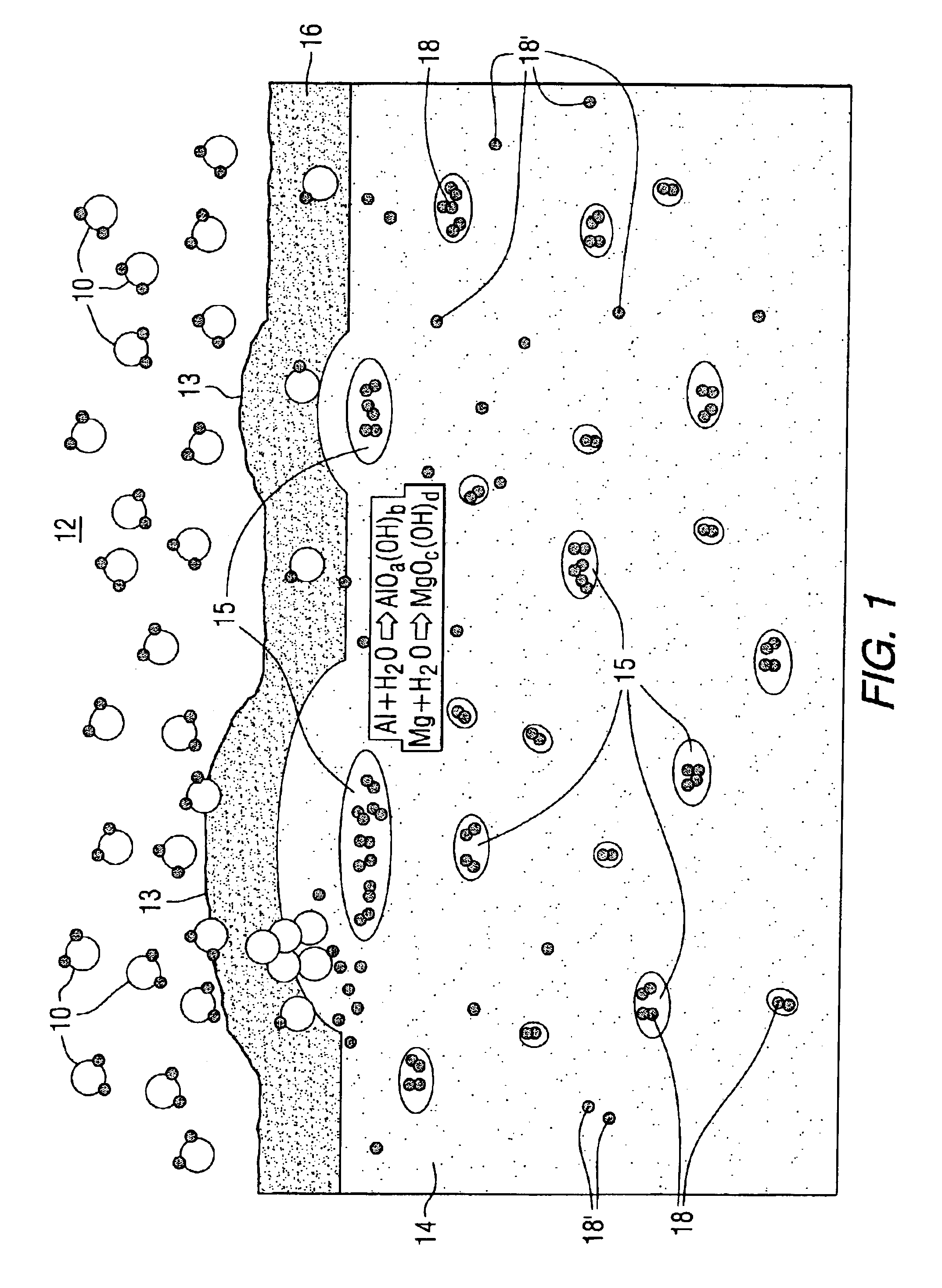Protective fluoride coatings for aluminum alloy articles
a technology for protecting fluoride and aluminum alloy, applied in the direction of solid-state diffusion coating, natural mineral-layered products, transportation and packaging, etc., can solve the problems of surface blistering, ineffectiveness of certain fluorides, sodium fluoride and potassium fluoride, etc., to promote hydrogen degassing, reduce material costs, and minimize the amount of active fluoride required
- Summary
- Abstract
- Description
- Claims
- Application Information
AI Technical Summary
Benefits of technology
Problems solved by technology
Method used
Image
Examples
example 1
[0033]Three small cylinders of 2024 aluminum alloy were deoxidized according to the procedures 50 shown in FIG. 5. The active ingredient, sodium hexafluorosilicate, was added to polyurethane (1 to 4 parts mineral spirits) to form a 65 wt. % sodium hexafluorosilicate solid mixture. The mixture was applied in two steps to achieve complete coverage to the cylinders of 2024 aluminum alloy using a paint brush. After curing, the three cylinders were placed into a quartz tube furnace. Air saturated with moisture to form a 95° F. DP (dew point) mixture was passed over the cylinders during heating to 910° F. The soak time at 910° F. was 2 hours. No surface blisters were observed for the coated samples.
[0034]After cooling to room temperature, the thermal oxide was removed by machining. The average bulk hydrogen value decreased from an initial value of 0.11 ppm H2 to a value of 0.03 ppm H2. This is a 72% reduction of bulk hydrogen and indicates hydrogen degassing. For an untreated sample, the ...
example 2
[0035]The same procedure was completed as in example 1, except that sodium hexafluoroaluminate was used. After the thermal treatment at 910° F. for 2 hours, the bulk hydrogen value decreased to a value 0.03 ppm H2 from the initial value 0.11 ppm H2. For an untreated sample, the bulk hydrogen value was 0.18 ppm. No surface blisters were observed for the coated samples.
example 3
[0036]The same procedure was used as in Example 1, except that 7075 aluminum alloy was used instead of 2024 aluminum alloy. The initial bulk hydrogen value was 0.09 ppm H2 and after the thermal treatment the value was reduced to 0.03 ppm H2, a 67% reduction in bulk hydrogen.
PUM
| Property | Measurement | Unit |
|---|---|---|
| thickness | aaaaa | aaaaa |
| temperature | aaaaa | aaaaa |
| thickness | aaaaa | aaaaa |
Abstract
Description
Claims
Application Information
 Login to View More
Login to View More - R&D
- Intellectual Property
- Life Sciences
- Materials
- Tech Scout
- Unparalleled Data Quality
- Higher Quality Content
- 60% Fewer Hallucinations
Browse by: Latest US Patents, China's latest patents, Technical Efficacy Thesaurus, Application Domain, Technology Topic, Popular Technical Reports.
© 2025 PatSnap. All rights reserved.Legal|Privacy policy|Modern Slavery Act Transparency Statement|Sitemap|About US| Contact US: help@patsnap.com



